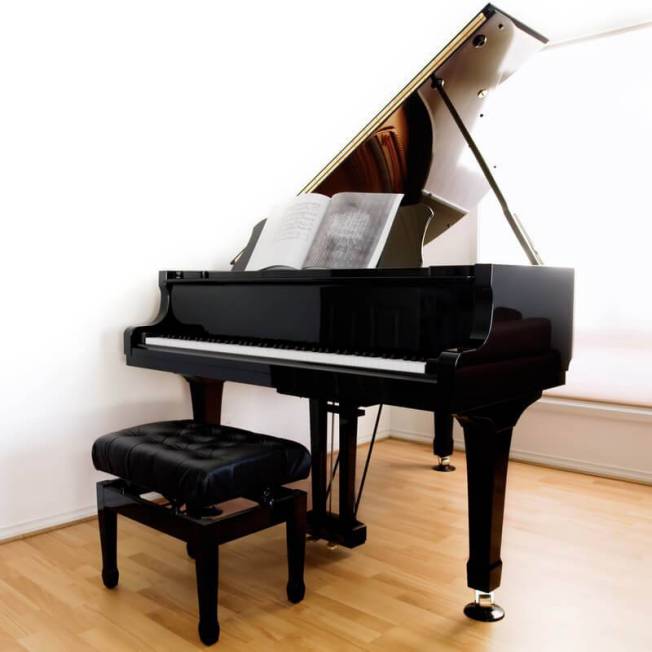Now, move your piano. If you're set on handling it yourself or with friends, we've compiled a step-by-step guide to walk you through each stage from disassembly to transportation.
Step 1
Taking apart your Baby Grand Piano is not an easy task and it’s a very detailed process. Do not rush and take your time. The first step is removing the piano lid. While doing this, please remember to save the screws. Once the lid is off, wrap it tightly using blankets. This will protect the lid from getting damaged.
Step 2
Next up, tackle the lyre, which is the wooden structure beneath the piano that holds the pedals. Take your time and unscrew it carefully, keeping track of each screw to avoid confusion.
Nothing worse than when it’s time to put everything back together, you are a screw short. Then, wrap each pedal individually with moving pads and secure them with tape to prevent damage.
Step 3
With the lid and pedals safely stowed, it's time to focus on the piano's legs. Depending on the model, carefully remove each leg, ensuring they're thoroughly wrapped in protective padding to prevent any dings or scratches.
Step 4
Once all detachable parts are secured, it's time to prepare the piano for transportation. Rest it against a sturdy board to distribute weight evenly and prevent strain on the legs. Wrap the entire piano in thick moving pads, securing them tightly with straps.
Step 5
The board also comes in handy for securing the piano during transport. Fasten it securely to the board to minimize movement and potential damage.
Step 6
Now, onto the logistics of moving each disassembled part. The bulk of the piano requires careful handling. It is advised to use a dolly to make sure it remains upright.
Place the piano directly in the middle so that it does not tilt to one side or the other. Usually, this is the step to ask for the help of friends. You will need help and it’s difficult to do this step alone.
Step 7
Loading the piano onto the truck is another delicate task that also needs the help of friends. Utilize a sturdy plank to create a ramp, allowing for seamless loading. With the piano securely in place, ensure it remains upright during transport, using additional support if necessary.
Step 8
Once loaded, securing the piano within the truck is very important. Position it upright so there is less risk of damage and avoid placing any items on top to protect the keys.
If the process seems overwhelming, don't hesitate to ask for professional help. Moving a piano requires expertise and delicacy.
With these tips, you're ready to tackle the challenge of moving your Baby Grand Piano with confidence. Share these insights with friends facing similar moves, and remember to prioritize the safety and integrity of your prized possession.

